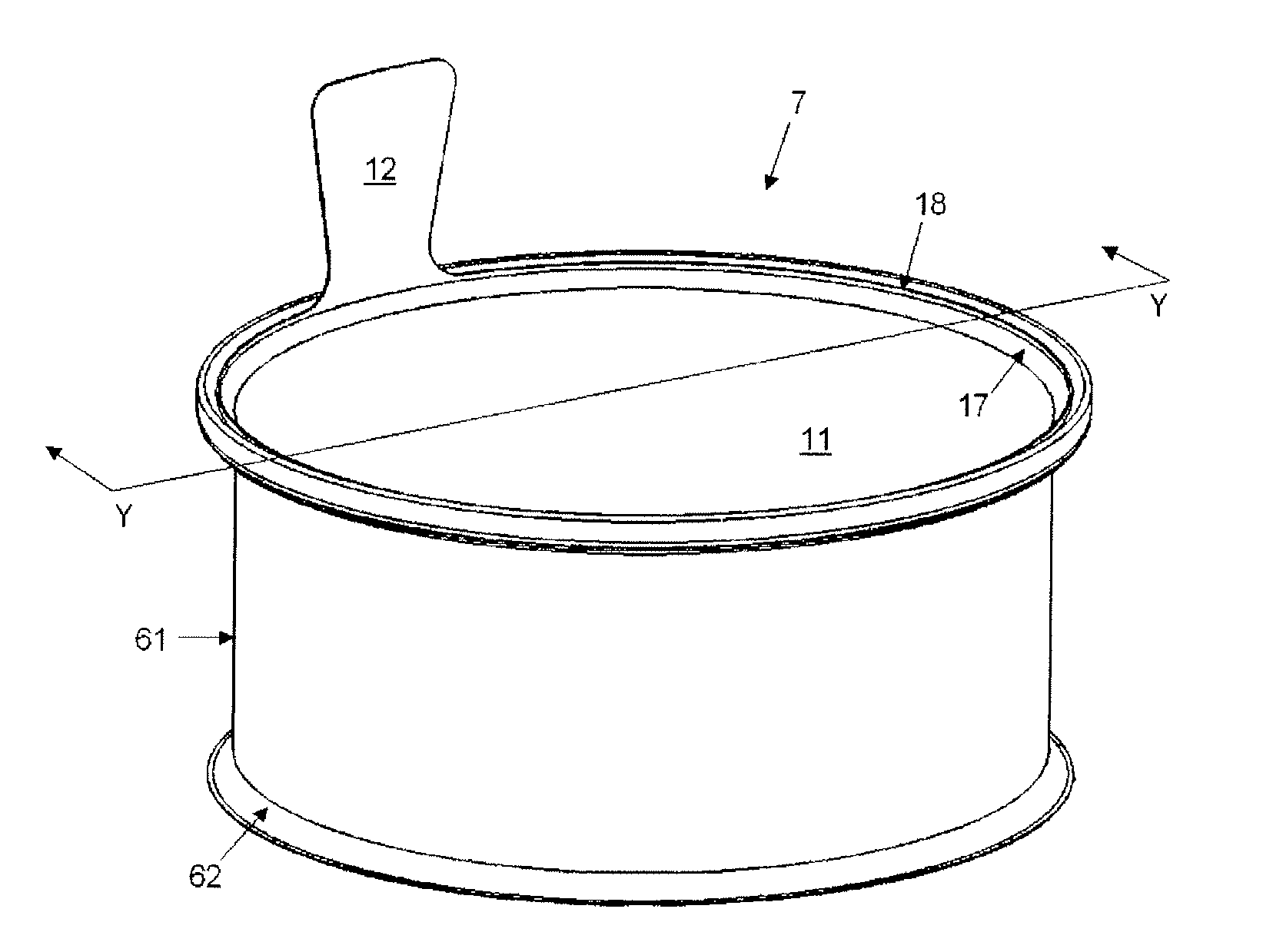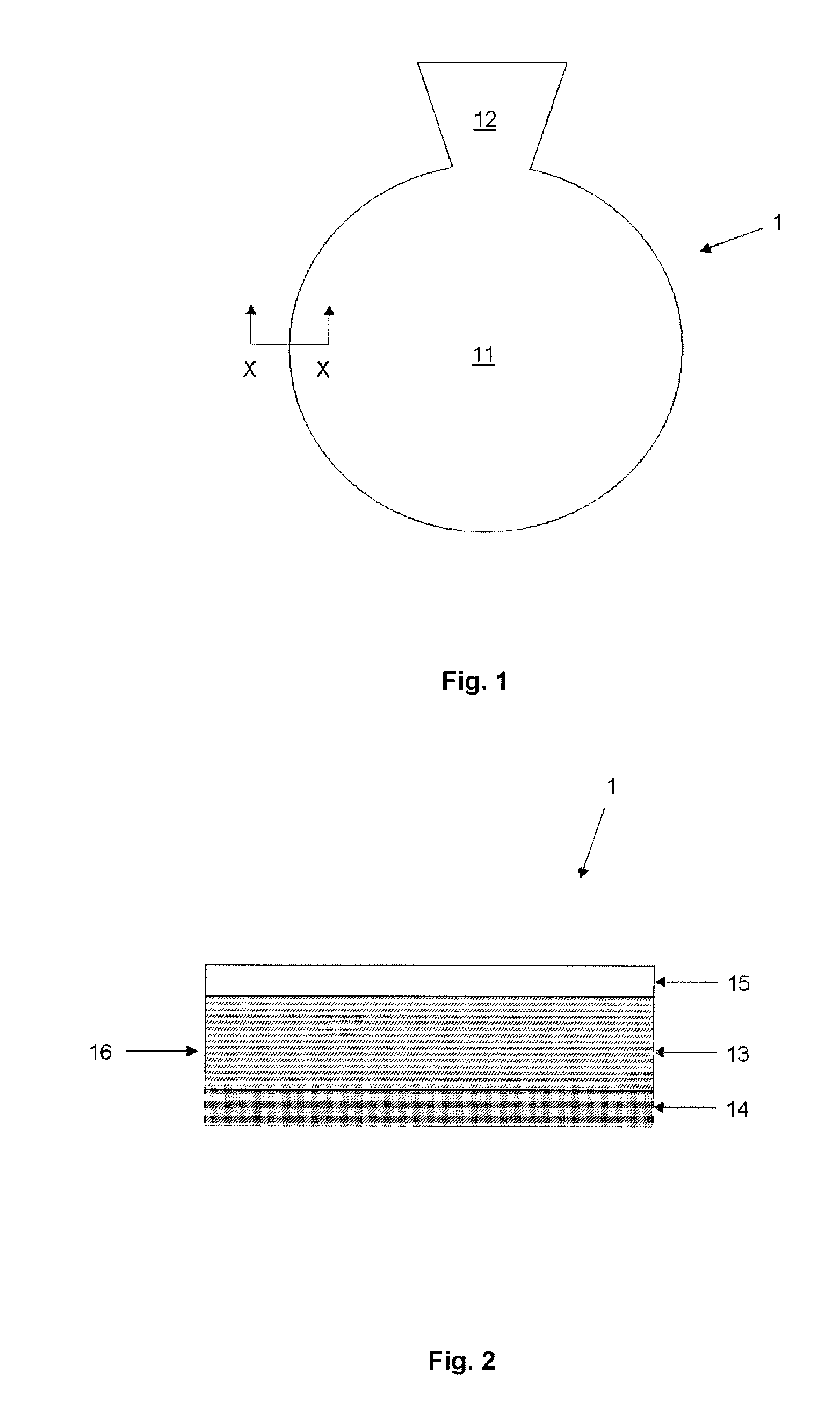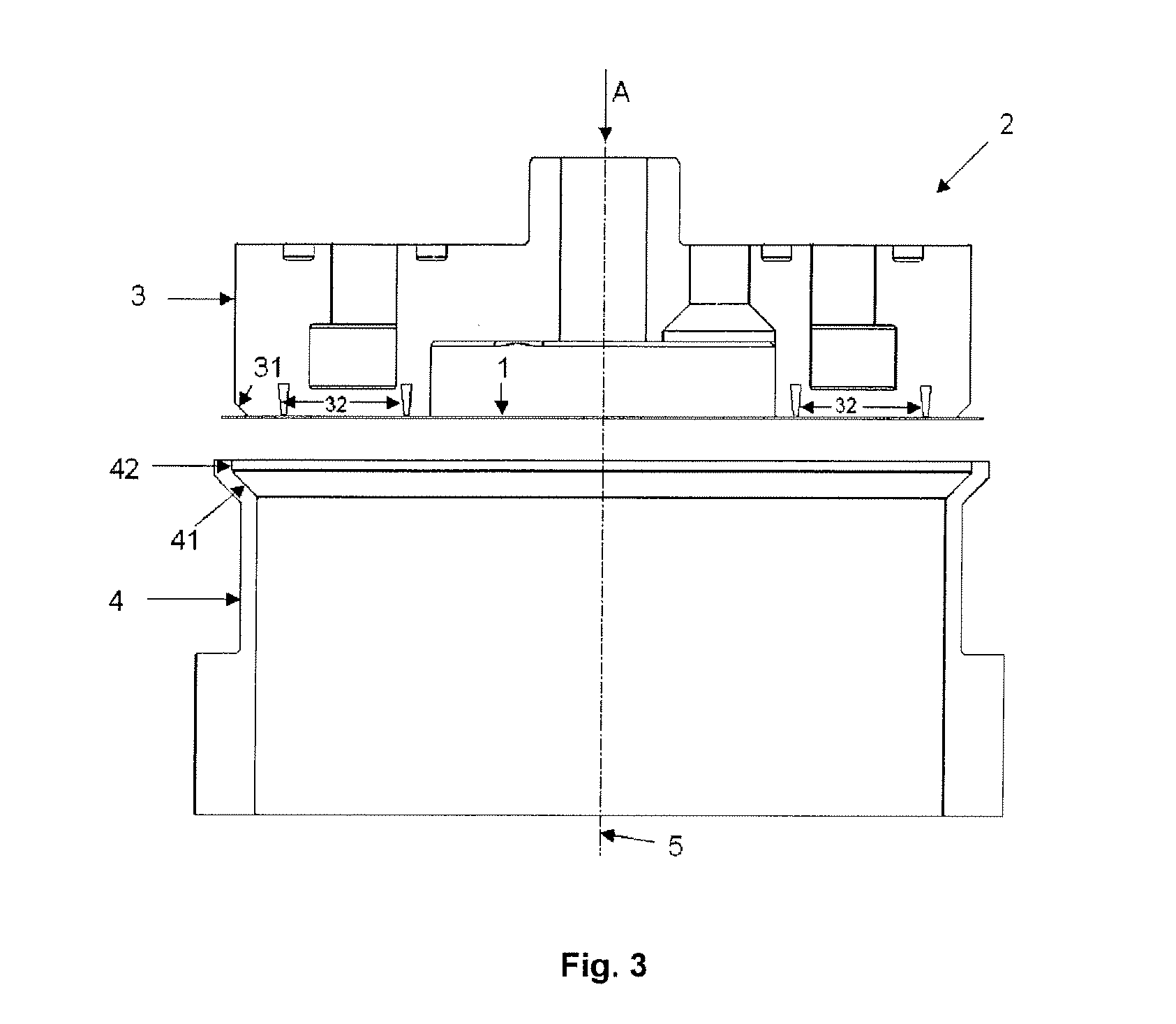Bimetallic corrosion mitigation
- Summary
- Abstract
- Description
- Claims
- Application Information
AI Technical Summary
Benefits of technology
Problems solved by technology
Method used
Image
Examples
Embodiment Construction
[0047]One or more lid blanks 1 are first cut (or stamped) out from a sheet (not shown) of pre-coated foil lidding material—see FIG. 1. Each blank 1 is generally circular in plan, having both a central cover portion 11 and an integral tab 12 (see FIG. 1). As shown in the cross-section view of FIG. 2, the blank 1 has a metal substrate 13 (formed in this case of aluminium) of 70 microns thickness. The lower surface of the aluminium substrate 13 includes a polypropylene-based coating 14, with the upper surface of the metal substrate including a coating of polyethylene terephthalate (PET) 15. As can clearly be seen in FIG. 2, a surface 16 of the metal substrate 13 is exposed along the peripheral cut edge of the blank 1.
[0048]One example of an apparatus and method for manufacturing the closure of the present invention is now described below:
[0049]FIG. 3 shows the initial configuration of an apparatus 2. The apparatus 2 has a punch 3. The lower surface of the punch 3 is generally planar, b...
PUM
 Login to View More
Login to View More Abstract
Description
Claims
Application Information
 Login to View More
Login to View More - R&D
- Intellectual Property
- Life Sciences
- Materials
- Tech Scout
- Unparalleled Data Quality
- Higher Quality Content
- 60% Fewer Hallucinations
Browse by: Latest US Patents, China's latest patents, Technical Efficacy Thesaurus, Application Domain, Technology Topic, Popular Technical Reports.
© 2025 PatSnap. All rights reserved.Legal|Privacy policy|Modern Slavery Act Transparency Statement|Sitemap|About US| Contact US: help@patsnap.com



